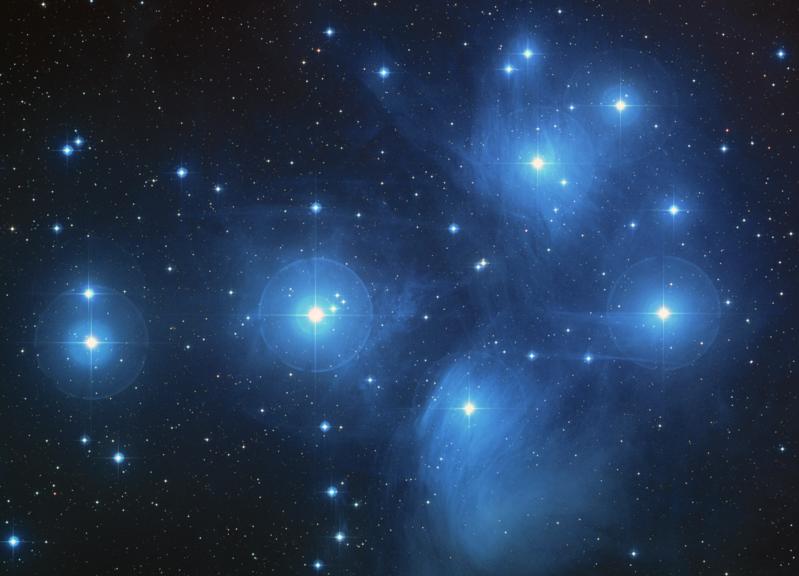Welcome to Learn to Astronomy! In this article, we explore the captivating mystery of the “Seven Sisters.” Discover the celestial wonders surrounding these prominent stars as we uncover their true identity and unravel the secrets they hold. Join us on this enlightening journey through the cosmos.
The Seven Stars of Astronomy: Unveiling the Mysteries Behind their Collective Name
The Seven Stars of Astronomy: Unveiling the Mysteries Behind their Collective Name
Astronomy, the study of celestial objects and phenomena, has always captivated our imagination. Among the countless stars scattered across the night sky, there are seven particular stars that have garnered special attention throughout history. These stars, also known as the Pleiades or the Seven Sisters, hold a significant place in various cultures and mythologies around the world.
The Pleiades star cluster is composed of hundreds of stars, but seven of them stand out and form a distinct pattern when seen with the naked eye. The stars appear close together, forming a cluster resembling a miniature version of the Big Dipper. They are located in the constellation Taurus, about 444 light-years away from Earth. Their brilliance and unique arrangement have made them easily identifiable since ancient times.
The Pleiades have been observed and named differently in diverse cultures. Ancient Greeks associated them with the seven daughters of Atlas and Pleione, thus naming them the Pleiades. In Greek mythology, the sisters were pursued by Orion the Hunter, leading to the sisters’ transformation into stars to escape his advances. Other myths and folklore from different regions offer their own interpretations of this star cluster.
The Pleiades have also played an essential role in navigation and timekeeping across various civilizations throughout history. For instance, Native Americans and Māori people in New Zealand have used the Pleiades as markers to determine seasonal changes and the timing of important events like planting or harvesting. The Pleiades’ rising and setting have long been associated with the changing of seasons in many cultures.
In modern astronomy, the Pleiades continue to intrigue scientists. Studying this star cluster provides valuable information about stellar evolution and the birth of stars. The Pleiades are relatively young, with an estimated age of about 100 million years, making them excellent objects for studying how stars evolve over time. Their proximity to Earth also allows for detailed observations and measurements, aiding our understanding of stellar astrophysics.
The Pleiades star cluster has truly stood the test of time, captivating astronomers and culture enthusiasts alike. Its collective name, the Seven Sisters, serves as a reminder of the enduring fascination we have with the night sky and its countless wonders. Whether through mythology, navigation, or scientific exploration, the Pleiades continue to spark curiosity and deepen our understanding of the universe we inhabit.
By: [Your Name]
Our Closest Stars. What Lies beyond the Solar System?
[arve url=”https://www.youtube.com/embed/T6GUHyRBgOQ”/]
Over 750 Trillion Stars Suddenly DISAPPEARED, But Now Something Emerged!
[arve url=”https://www.youtube.com/embed/6gRSaNFMAjU”/]
Frequent questions
What are the seven stars called when they are together in astronomy?
The seven stars that are referred to as a group in astronomy are known as the Pleiades or the Seven Sisters.
What is the name of the group of seven stars that astronomers refer to?
The group of seven stars that astronomers refer to is called the Pleiades, also known as the Seven Sisters.
Can you provide the name given to the constellation formed by the seven stars in astronomy?
The name given to the constellation formed by the seven stars in astronomy is **Pleiades**.
In conclusion, the group of seven stars known as the Pleiades holds a special place in the realm of astronomy. These celestial gems have captivated the human imagination for centuries and continue to inspire awe and wonder. From ancient mythology to modern scientific exploration, the Pleiades have left an indelible mark on our understanding of the cosmos. Their beauty and significance serve as a reminder of the vastness and intricacy of the universe we inhabit. As we gaze up at the night sky, let us not only appreciate the splendor of these seven stars but also recognize their role in shaping our cosmic perspective.

